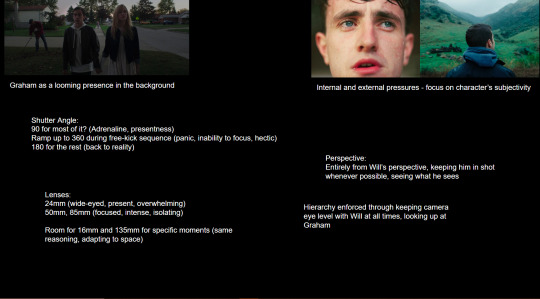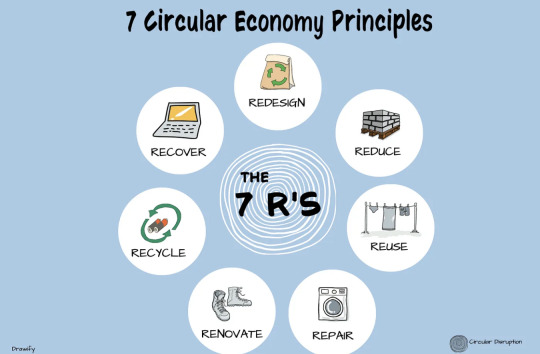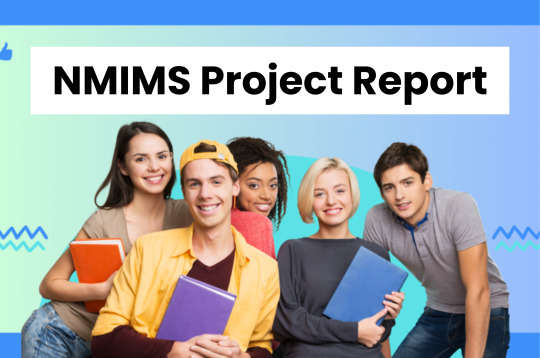#because it's knowledge of material instead of knowledge of methodology
Explore tagged Tumblr posts
Text
i'll be completely honest... i don't want to study for the exam i have tomorrow! as it is i've procrastinated enough by spending half the day making collages but i guarantee i'll procrastinate some more
#melonposting#the annoying thing about this exam is that it's much more memorization-based#for subjects like stats the main way to study is to practice. to understand techniques and intuitively know how to use them#especially when you aren't required to know formulas off the top of your head#there's a certain inherent logic to it that exists on its own. you don't have to really stuff your brain with things#it's procedural#but for my jewish texts final... i have to be able to define all of these terms. to match up people to places and time periods#i have to stuff my brain with sentences... descriptions and translations and such...#because it's knowledge of material instead of knowledge of methodology#and it's funny for me to complain about that when i've historically prattled on about my distaste for doing math#but at the same time i don't entirely dislike it. it can be very satisfying at times#and also non-math subjects can be just as stressful or frustrating at times... if not more so!#in any event my stats final is behind me so i'm no longer worrying about it. my jewish texts final is the big fish to fry
3 notes
·
View notes
Note
Are you a fan of hard science fiction?
tl;dr:
This is a very complicated question, and it depends on what the author considers technology, science or culture.
long version:
Super, super depends honestly and the deciding factor is usually the author's own self-awareness.
A lot of hard SF spends months perfecting its technical research and then for whatever reason has writing that has done zero research in humanities or social studies and is just someone repeating the bits of world history they like not realizing the irony.
I like hard SF when it uses the machine to tell a story, otherwise its not playing to its strengths. Clarke got this. Morgan less so.
This also depends on how you define it: Do you mean hard SF as in its all technically plausable or Hard SF, where how the technology matters to the story?
These mean very different things!
Likewise, there's also then the question of most hard SF not understanding science well enough to understand what post-science [...]
eg, the idea that science is more than just the sum of research, and that how we do peer-review analysis needs to be seriously changed because of the replication crisis, and how we store and educate science needs to change due to the knowledge and expertise collapse crisis, or the fundamental change of how knowledge and information and abstraction functions with respect to reality itself, etc, etc, none of which hard SF acknowledges at all whatsoever which is the least realistic thing about it
[...]
is or where engineering is going next so they're just repackaging speculative fiction's methodology from 40 years ago without actually doing the leg-work beyond "what the next doohicky is", instead of seriously asking how science itself is going to change.
Its tempting to think that technology is the active human interface with the material world, but I would argue for all intents and purposes there is no material world beyond what humans experience either directly or indirectly and the reason we would want to preserve that non-experience without exploiting it is because some day we'd like to experience it to gain revelations both scientific and cultural.
The idea that science is automatically synonymous with technology is a frankly rediculous one because it refuses to recognize that one does not automatically become the other just as tomes of knowledge do not become useful effectve contexturalized understandings within your mind the moment you exchange money for them.
At for example, is in a way a sort of technology but its a cultural technology yet I never hear of hard SF exploring this angle. Instead, its the fetishization of how you can use tungsten orbs and catching nets to devise the most efficient cooling system possible or how fast your imaginary drive can go because you studied pusher plates and nuclear propulsion on wikipedia once and felt a tingle in your hind brain about it. We're all fundamentally excited children when we see big numbers, but but numbers alone don't make a compelling story I think.
As an example, I genuinely don't think of The Expanse has hard SF and it has nothing to do with its warp drive but instead its total lack of understanding that the fundamental ways in which society functions would drastically change in such a time.
Humans who act like we do today even fifty years in the future are the "guys painted green with deelyboppers" of science fiction of today and nobody outside of study seems to notice this.
If an author can't imagine a fundamentally very different social system but an go on for hours about how optomagnetic holographic storage and nano-vacuum tubes with switching speeds in the terrahertz range are wonderful I think the author just wants to talk about cool things they like indulgantly and not really even do science fiction.
That's particularly difficult for me becuase I'm someone who often does exactly that! I am a VERY self-indulgant writer!
In conclusion I'd say its less I'm either a fan or not a fan of hard SF (I do love using technology to tell a story which is what hard SF does) but the fact "hard" SF is held in higher esteem than "soft" SF speaks to an emotional insecurity in the audience that they should want to forgo the humanities and uninform themselves of the human condition as if they are above it in some way which I frankly find rather ghastly.
I think science fiction's most important lesson is not to do the torture nexus again and I think without the humanities that becomes rather difficult.
Sorry if this is a bit of a funny answer.
I appreciate the question, and thank-you for your time.
68 notes
·
View notes
Text
Fandom (and art) as sites of worthless knowledge
Instead, what if we embrace fandom and art practice as a site of “worthless knowledge” (Jenkins), which is when art and fanfiction stops operating under conditions of “immaterial labour” or as “a service” and becomes something else: let’s call it an “affective knowledge”; a textural knowledge felt and sensed by individuals and communities over knowledge inscribed by institutions of power.
. . . .
Fans have spent decades harbouring shame over their exploits because “[f]ans are seen as devoting too much time to obtaining useless knowledge and place too much importance on ‘devalued cultural material.’ ” Spending excessive amounts of time reading or writing fanfictions about boy-on-boy romance, fans are not at work doing something more productive like contributing to capitalism’s productive regime. Just as when female fans are fantasising about boy-on-boy romance, they are not participating in heterosexuality’s reproductive regime. ( . . . ) As Tonya Anderson points out in her article “Still Kissing the Poster Goodnight”: “dominant cultural politics characterise such female fan behaviour in adulthood as pathological.” In such instances fans are operating in “excess” and at best – in counter-to-knowledge.
From here, art and fandom might be better understood as affective communities that form around a shared feeling, that might not only be defined by our social or biological identities or by knowledge, but by an unproductive pleasure that undermines our productive desires, or to put it simply: by “being in love with their love” (Karukara).
PARRY, OWEN G. (2019) ‘“SHIPPING” (AS) FANDOM AND ART PRACTICE’. FANDOM AS METHODOLOGY. LONDON: GOLDSMITHS PRESS.
67 notes
·
View notes
Text
Pākehā Listening: my BA (Hons) Thesis
Pākehā Listening and Indigenous Voices in Contemporary Art Research: Troubling neocolonial methodologies toward reciprocal relationality; Working on relationships with Cora-Allan Wickliffe.
Submitted November 2018, Department of Art History and Theory, University of Canterbury, Ōtautahi Christchurch, Aotearoa New Zealand.
From the introduction:
"In this text, I am telling my story of coming to an orientation towards research, towards researching Indigenous artists while being Pākehā, and towards my relationship with Cora-Allan Wickliffe (Ngāpuhi, Tainui, Alofi, Liku). In the face of a global higher education largely fixated on the resolution of inequity with knowledge, language, methods, values, and people descended from the imperialist, European ‘west’—and my lived position within that worldview—I am seeking a methodology that unravels this worldview’s power and implicit oppression of those in its margins through the weaving together of relationships. I attempt this not in order to become the same as, or fully know the indigenous collaborators my Pākehā/Tauiwi self seeks to have a relationship with, but rather to have a relationship that is about difference, in order to reciprocate with one-another by offering ourselves where one of us needs to speak, while the other must recognise the need to listen. Therefore, I am not telling Cora’s story here. I may present Cora’s words as stories on their own, with all the contamination of editing, structure, and framing that this written format implicates. However, through a queer autoethnography, I will tell my story of what happens while feeling, reading, writing, sensing, talking, and listening to my relationship with Cora."
From the Conclusion:
"Judith Butler and Stacy Homan Jones recite a duet about the precarity, obligations, and potential we recognise, when we recognise people as real ‘as they are’ and not as only real ‘for them’. “There is losing; and there is the transformative effect of loss. Neither can be charted or planned.” “After all, if someone is lost and that person is not someone.. ‘Then what and where is the loss and how does mourning take place?" “Queer stories also recount the debts we owe to other’s voices, words, and ways of living and loving—not as a way of getting over or closing down grief or moving on, but instead as an opening up and out into new ways of relating.” Indigenous, Queer, and other exploited and oppressed knowledges and people must be materially empowered as being real, legitimate, speakable, and legible ‘as they are’. Those of us in positions of power must learn to relate in new ways to these people and knowledges not for the survival of difference as a hollowed-out, marketable brand, but rather for the flourishing of healthy ecologies of reciprocity because of difference in order to escape the grips of our shared anthropogenic, and earthly catastrophes. Braiding together people, cosmologies, critiques, and disciplines I have traced a thread through the material, personal, and metaphysical. I recite a story to you, hoping it might pass as a legitimate stepping stone upon which new, equitable methodologies might be realized and practiced."
3 notes
·
View notes
Text
KEEPER - Lens Tests and Personal Development
Through the early part of this term, I have been trying to get to grips with the new equipment available in my fourth year, develop my overall understanding of cinematography and attempt to find more work in the camera/lighting departments.
During the summer, I spent some time with MTP on set in a work experience/shadowing capacity. This was very interesting, being able to watch a camera and lighting team work on a commercial for a day. I was picking the Gaffer and Cinematographer's brain and observing how the light was being used on this set. One thing I was missing in my lighting knowledge was a bit of clarity on using soft light. In my mind, I had associated the softness of a light with what materials it passed through, instead of the size of the source. I realised I had used the diffusion totally incorrectly on The Play, a short from last year. I was trying to put more layers in front of the light to soften it without widening the beam. For example, I had a light shining through a window which I had skinned with half-white diffusion, but, hadn't allowed the light to fill out the entire window. On Longboard Nights, the last short I shot, I was using primarily hard light which I think matched the mood of the piece, however, I wasn't controlling the bounce correctly. I was wanting high-contrast images and thought hard light would do most of the work for me. However, in a house with white walls, creating high contrast really relies on the minimising of bounce and spill. That set also showed me something I should've used all the way through the shoot of Longboard Nights which was: when trying to shoot night interiors during the day, skinning the windows with blue gels and ND can give a dusky ambience to the room, which can then be accentuated by any planned lighting. While this was a great day that taught me a lot and introduced me to great people, I am kicking myself that I had to turn down a job offer that I got off the back of this, because I was still working hospitality and it was late notice. This is something I'll need to work out the balance of upon graduating: paying the bills while also being available for any career moves.

Wee Alex in the background, on set doing some really impactful interviews for "Don't Say Gay", find the teaser here: https://vimeo.com/885958871
In the first month of term, I spent a few days working as a Grip on two projects - one a documentary, the other a scripted drama short. Again, I was learning a lot about the importance of soft light in an interview setting, but also working with natural light on the drama short, something I have taken into the test shoot for Keeper this term. It was also interesting to see how the cinematographer worked with the director. I really enjoy the way Ben and I work together and I think it opened my eyes to the things we do well (our communication is very clear and the trust is there, I think) and where our methodology for how we tell the story is lacking. This is something we reassessed after the Test Shoot which I will expand on in another post.
Then, with our first few classes this term, I was having a couple refreshers on Lighting, where I could put this developed understanding into practice. We also spent the time learning how to use the Alexa Classic which I then used on the Test Shoot in November.
I have always believed that the cinematography must follow the story instead of having any motivation around beauty or interest. So, the script development phase is the perfect time for me to be developing my overall skills instead of trying to develop the look of the film.
However, once I had a clear idea of what the story involved, I was able to start conversations with Ben about the perspective of the piece. We agreed that the film should be entirely from Will, the protagonist's perspective. In my previous work, the camera's perspective was mainly designed to accentuate emotion - for example, The Play's wide frames and locked off camera accentuated the emotional distance between the characters. But, this approach was an observational one, the audience's emotions are being played as an observer, without a direct association with the psychology of any of the characters. For Keeper, we feel that the only way that the full drama and impact of the story can be felt is if we are with our protagonist throughout, so we can see how much he cares, how hard he works, how his insecurities are brought forward and how hard it hurts when he realises he will never get what he wants. So, as a guiding principle for this film, we will only be seeing Will or what he sees, how he sees it.
With this idea pretty much locked-in, I was able to test the lenses available to me with an eye for how they would impact this idea of perspective. Here are the results (I forgot to export the subtitles which specified the lens but I know, and when we made decisions we knew which we were choosing, just take my word for it). Probably best to watch at 2x speed, it's a bit long...
vimeo



A close-up on a 24mm, 50mm and 85mm
I knew the frame sizes and views we would most likely be relying on: close-ups on Will, wides of the pitch, mids of Graham at a distance. I found during these tests that for the early parts of the film, I would want to be watching Will in a 24mm as it gives a view wide enough for us to see him and his environment without being so short as to be distracting in it's warping and unconventional rendering of a face. But, as the film progresses and Will becomes increasingly insecure and loses sight of anything but his own performance, we move onto the 85mm via the 50mm. This approach also worked for me with the changing room scenes that sit either side of the training session.

Will sitting in a MCU on a 24mm
In the first changing room scene, we can see some of his team mates' shoulders, his clothes hanging up - we are situated in the space. But then, when he returns, he feels totally alone. This is where we could still go in two directions. One is to come in close, to analyse Will's emotions in this moment and the other is to go wide to feel his isolation and loneliness.

An inspiration still from Win Win (2011)
Another building block of Will's perspective is his watching of Graham, the coach, whose opinion of Will determines his future. I wanted to see Graham in an over the shoulder to better emphasise the perspective and by blocking part of the frame with Will's shoulder, it pushes us in closer to Graham, adding intensity without needing to be tighter in. This I liked most on the 85mm, again, this was due to a balance of environment and subject.


A comparison of Get Out (2017) 's clean single and the dirty single from my tests
Another view I wanted to have was the expanse of the pitch, to see Will looking out at too much for him to handle. I wasn't able to frame up properly during my tests as I had a limited time and I was both operator and stand-in, but I think the 24mm, was again the right choice for this view.


An example of what I wanted to achieve and the result of my test
I edited all the tests together and talked them through with Ben and he agreed with my preferences. Now, we have narrowed our lens choices to the 24mm, the 50mm and the 85mm for the vast majority of the film.
Following on from my previous post where I talked about maybe using a wide shutter angle during the free-kick scene, I also did a test of this at the same time as my lens tests. But, after the test and talking with Ben and Rosie we actually decided to go in the opposite direction and gor for a 90-degree shutter angle for the majority of the film (I took some persuading). We watched the classic example of a 90-degree shutter angle - Saving Private Ryan (1998) - and I found it to not suit our story.

Saving Private Ryan's 90-degree shutter angle sequence
My main issue was the way the shutter angle exacerbated camera shakes, making them stick out far more than at another shutter angle. I felt the film's environment was sterile and controlled, which any camera shake would undermine. However, when Ben and Rosie explained to me how it would better fit Wills emotional state, I came around. Will being hyper-aware and adrenaline fuelled throughout the training session lends itself well to a crisp image, with minimal motion blur, not to mention that audiences are also used to seeing sport shot at higher shutter speeds so it would feel more realistic. On top of this, the idea of sterility and control can be achieved in a multitude of other ways, namely the lighting, production design and lack of handheld camerawork.
Anyways, after these tests, I was in a more informed position to be making some decisions about the look of the film. I had lots of discussions with Ben about the tone which helped me decide on lighting approaches. The realist tone of the film meant that I had to be very motivated with my lighting, making sure it made sense for the world. A lot of the script dictated how I was to light the film which really helped as Ben has such a clear idea of how it needs to feel. One thing that the script specifies is the fact that the session takes place at night, under floodlights. This means that high contrast imagery is necessary for the realism of the space but also contributes well to the intense tone of the story. This also applies to the changing room sequences, where these spaces are almost universally lit top down in real life. Again, this also creates a moody and intense feeling to the lighting, adding shadows to the eyes and neck. This was even something we practiced in class when recreating this shot from Get Out (2017).

A class exercise
Ben and I also had a big brainstorming session about how we could draw out the themes and ideas of the film.

Big scribbles, wee ideas
To expand on these small scribbles, this is how I see us exploring these themes:
The Pressure we feel comes from the stark, high contrast lighting and slowly lengthening lenses throughout the course of the film. As Will feels more pressure, we zoom in, making each action more specific and weighty. Another aspect of this is that the scenes at the football club will be shot at a 90-degree shutter angle to minimise motion-blur, allowing the audience to feel the adrenaline-fueled hyper-awareness of our main character. He can’t miss a thing, so he doesn’t.
The Religion of our main character is football. We want to show how someone can become dependent on a culture and how when this culture is harmful how hard it is to extricate oneself from it. This is primarily communicated through the bedroom scenes that bookend the film, where Will sits in his bedroom that is adorned with football memorabilia. I want to shoot these two scenes in a way that changes the meaning of the room. We begin with a brightly-lit, colourful space with multiple practical lights, shot on wide lenses, letting us soak it all in. But, when we return, the room feels suffocating, shot on longer lenses, compressing the space and it is lit by a single light in the corner, giving it a sad, gloomy feel.
Pragmatism is an idea implanted in Will by the coach. Instead of feeling that he can take on the world if he tries hard enough, he is left feeling that he is doomed to fail. So where before we would move the camera alongside Will, now we are locked off. His mobility has been cut off.
The Hierarchy between Will and Graham is a simple matter of eyelines. We look up at Graham and, when Will is feeling small, we look down on him.
Most of this went into the final pitch deck (minus of course the jib motion as we realised we didn't have the equipment to pull this off). It also allowed Ben to fully communicate what he wanted to explore with the film. I then wrote down everything I liked in my little scramble document, here's an excerpt:

Scrapbookin
At this point, we needed to focus on our pitch deck and presentation which was a useful exercise not just to practice pitching but also to collate all the research and clearly define the approach to the cinematography. I will post the pitch deck next as a summary of the research I have been doing.
4 notes
·
View notes
Text
WEEK 3: This Is How You Connect Practice with Society
My personal method of connecting these dots would be through sustainability as it is one of the simplest ways to get started.
as climate change is one of the biggest societal challenges we face today. Through advocacy, knowledge, and collaboration, I believe that I can learn about sustainability through circular economy practices and take small steps like reducing plastic use, buying sustainable products, and donating to support the cause.

More reads on circular economy
The effects of climate change on my projects would be:
for example, building and infrastructure products that are resilient to extreme weather and events, taking this methodology how can I utilise this in my design principles, such as how long will this product endure time or how will this product withstand?




Here are some examples of how I can use circular economy practices to create new art and add value to my work. This art can raise consciousness by displaying the use of recycled materials and highlighting climate change's importance. It also creates a sense of community and care.
Biophilic elements can be incorporated into my own practices through the integration of natural materials such as leaf patterns, charcoal derived from willow and vine twigs, pigments derived from foraged plants, flowers, and many more. These elements can then be incorporated into my art or design projects.
Personally, collaboration in this situation is imperative because it allows people of all ages to participate from different perspectives. In collaborations like these, artists from all walks of life can come together and learn from each other, in addition to having this synergy to bounce fresh ideas, unique approaches, and broad creative solutions that might not have otherwise been possible.
Total words: 275
References:
"7 Circular Economy Practices". https://medium.com/circular-disruption/7-circular-economy-principles-to-rethink-the-value-of-waste9ba9a219b218#:~:text=Instead%2C%20resources%20are%20kept%20in,start%20on%20these%20seven%20principles. "Hermes-Nature at Full Gallop". 2016. Studio photography: Angus mill. https://www.bethanlaurawood.com/work/hermes-nature-at-full-gallop/ "Traces". August 11, 2016. Traces 1, 20" x 26," Monoprint collage. https://hannahklaushunterarts.com/blog/tag/monoprints Laura Donnelly Bethmann. https://www.pinterest.com/pin/23432860615905686/
2 notes
·
View notes
Text
Why NMIMS Project Reports Are Easier Than You Think – Learn the Secrets

If you're a student at NMIMS, chances are the term “project report” brings a wave of anxiety. With busy schedules, exams, and deadlines constantly knocking, putting together a comprehensive report can seem like a daunting task. But what if we told you that creating a well-structured project report isn’t as complicated as it sounds?
In reality, with the right approach and a few smart strategies, NMIMS project reports can be both manageable and rewarding. Let’s break it down, step by step, and uncover the secrets students wish they knew earlier.
Start with a Clear Understanding
First things first—know what’s expected. A project report is not just a document; it’s a reflection of your learning, research, and analytical thinking. It needs to be structured, relevant, and well-articulated. Before diving into writing, go through the project guidelines provided by the university. Understand the objective, format, word count, and evaluation criteria.
Often, confusion starts when students begin working without understanding the goal. Spend time framing the topic, outline your objectives, and identify the problem you aim to address. That clarity alone can give you a major head start.
Choose a Topic That Interests You
You’ll spend hours working on your project—so pick a topic that genuinely interests you. Whether it's marketing, finance, human resources, or operations, choose a theme that you connect with. A topic you enjoy will keep you engaged and motivated, especially when research gets intense.
It also makes a huge difference in how your content turns out. Passion shines through your writing—and evaluators can spot that easily.
Break the Project into Small Tasks
One of the smartest ways to tackle your report is to divide the work into manageable chunks. Instead of writing everything in one go, create a timeline. Set mini deadlines for research, writing each section, proofreading, and final review.
This approach helps eliminate the panic that comes with last-minute rushes. A calm, well-paced effort always leads to better output than a hurried overnight job.
Focus on Real-World Relevance
Here’s a tip straight from the toppers: link your project with real-life scenarios. Whether it's a case study, market data, or recent trends, showing that your topic has practical implications makes your report far more impactful.
For example, if you're writing on employee motivation, citing how companies like Google or TCS handle it adds weight. It shows you're not just repeating theory—you’re analyzing it in the context of today’s business world.
Don’t Underestimate the Power of Structure
Many students lose marks not for lack of content, but because their project lacks flow. A good report needs a clear introduction, well-organized body sections (methodology, findings, analysis), and a strong conclusion.
Use headings and subheadings to make your report easy to navigate. Include tables, charts, or visuals wherever relevant. Not only does this make the report more engaging, but it also shows your effort in presenting information effectively.
Use the Right Tools and Resources
There’s no harm in seeking help—just be smart about it. NMIMS provides access to useful study materials, case banks, and sample projects. Use these to understand formatting and referencing styles.
You can also turn to online libraries or academic databases for credible sources. And if you're short on time, consider getting guidance from mentors or professional editors who understand NMIMS project reports and their specific format.
Final Thoughts
The idea of writing a project report may seem stressful at first, but once you break it down and follow a structured plan, it becomes a lot more doable. With the right topic, thoughtful research, and a dash of discipline, you’ll not only complete the report—you’ll feel proud of it.
Remember, every project is a chance to showcase your knowledge and creativity. So take a deep breath, plan your steps, and trust the process. You’ve got this.
0 notes
Text
MaxLearn: The Ultimate Solution for Knowledge Retention

Introduction
In today’s fast-paced corporate world, ensuring long-term knowledge retention among employees is a critical challenge. Traditional training methods often fail due to information overload and lack of reinforcement, leading to poor retention rates. Research indicates that without proper reinforcement, employees forget nearly 70% of newly acquired information within a day and up to 90% within a week. This rapid decline in memory retention, known as Ebbinghaus’ Forgetting Curve, significantly impacts workforce efficiency and training ROI.
MaxLearn, an AI-powered microlearning platform, offers a strategic approach to combat knowledge decay. By leveraging adaptive learning, spaced repetition, and retrieval-based learning, MaxLearn ensures that learners not only retain information but can also apply it effectively in real-world scenarios.
The Science of Learning and Retention
For learning to be effective, it must be structured in a way that aligns with cognitive science principles. Research in neuroscience and psychology has shown that frequent reinforcement, active recall, and adaptive learning contribute to higher retention rates. MaxLearn integrates these principles into its training methodology, making learning more engaging and effective.
Spaced Repetition: Reinforcing Learning at Optimal Intervals
One of the key strategies to combat forgetting is spaced repetition. Instead of bombarding learners with information in a single session, spaced repetition ensures that concepts are reinforced over time at scientifically determined intervals.
MaxLearn utilizes AI algorithms to schedule repetitions based on individual learning patterns. The platform tracks each learner’s progress and strategically reintroduces critical information at moments when they are most likely to forget it. This method strengthens neural connections, making information more accessible for long-term retention.
Unlike traditional training methods that rely on generic review sessions, MaxLearn personalizes the spaced repetition process, ensuring that learners focus more on concepts they struggle with while reducing redundancy on well-mastered topics.
Retrieval Practice: Strengthening Memory Through Active Recall
Passive review of information is far less effective than active engagement with the material. Retrieval practice, or the act of recalling information from memory, has been proven to enhance knowledge retention significantly.
MaxLearn incorporates retrieval-based learning techniques through quizzes, assessments, and scenario-based exercises. Instead of merely rereading information, learners are prompted to recall and apply knowledge, reinforcing their memory pathways.
By embedding retrieval practice into the training process, MaxLearn ensures that employees not only retain information but can retrieve and use it confidently in their work environment.
Adaptive Learning: Customizing Training for Maximum Impact
Every learner has unique needs and varying levels of proficiency. Traditional training methods often fail because they apply a one-size-fits-all approach, disregarding individual differences in learning styles and prior knowledge.
MaxLearn’s adaptive learning engine continuously analyzes learner performance and tailors the training experience accordingly. If a learner struggles with a particular topic, the platform provides additional reinforcement through targeted exercises and content variations. Conversely, if a learner demonstrates mastery of a subject, MaxLearn reduces redundant repetitions, keeping training efficient and engaging.
This level of personalization ensures that employees receive training that is relevant to their skill level, preventing cognitive overload and improving overall retention.
Microlearning: Breaking Down Complex Topics into Manageable Units
One of the biggest challenges in corporate training is the overwhelming amount of information presented in a single session. Long, monotonous training sessions lead to disengagement and poor retention.
MaxLearn addresses this issue with microlearning—a method that delivers content in short, focused bursts. Each module is designed to convey a single concept concisely, making it easier for learners to absorb and recall information. These bite-sized lessons can be accessed anytime, allowing employees to learn at their own pace and revisit content as needed.
The effectiveness of microlearning lies in its ability to fit seamlessly into employees' daily workflows. Instead of dedicating hours to training, learners can engage with short lessons during breaks, leading to continuous knowledge reinforcement.
Gamification: Enhancing Engagement and Motivation
Learning becomes significantly more effective when it is engaging and rewarding. Traditional training often lacks motivation, leading to low participation rates and poor knowledge retention.
MaxLearn integrates gamification elements such as leaderboards, achievement badges, and reward points to encourage active participation. By turning learning into a game-like experience, employees feel motivated to complete modules, compete with colleagues, and track their progress.
Gamification also reinforces learning by creating a positive feedback loop. Each successful recall of information or completion of a challenge is met with instant rewards, strengthening memory retention and making learning an enjoyable experience.
AI-Powered Analytics: Measuring and Enhancing Training Effectiveness
To optimize learning outcomes, it is crucial to track progress and adjust training strategies based on real-time data. MaxLearn’s AI-powered analytics provide detailed insights into learner performance, engagement levels, and areas that require improvement.
Trainers and managers can use these analytics to identify trends, measure the effectiveness of training programs, and make data-driven decisions to enhance learning strategies. Learners also receive instant feedback, helping them recognize their strengths and focus on areas needing improvement.
By leveraging AI-driven analytics, MaxLearn ensures that training programs are continuously refined for maximum impact and knowledge retention.
Application in Real-World Scenarios
For corporate training to be truly effective, employees must be able to apply their knowledge in practical situations. MaxLearn incorporates real-world applications through interactive case studies, simulations, and hands-on exercises.
By exposing learners to workplace scenarios that require problem-solving and decision-making, MaxLearn bridges the gap between theory and practice. This hands-on approach not only reinforces knowledge but also enhances critical thinking skills, ensuring that employees can apply their learning effectively in their roles.
Continuous Learning: A Long-Term Approach to Skill Development
Learning should not be a one-time event; it should be an ongoing process. MaxLearn promotes continuous learning by providing refresher modules, advanced training pathways, and ongoing assessments to keep knowledge fresh and up to date.
By integrating learning into employees’ daily routines, MaxLearn fosters a culture of continuous improvement and skill development, ultimately leading to a more knowledgeable and competent workforce.
Conclusion
MaxLearn stands as the ultimate solution to combat the Forgetting Curve and improve knowledge retention. By leveraging spaced repetition, retrieval practice, adaptive learning, microlearning, gamification, and AI-powered analytics, MaxLearn ensures that training is not only effective but also engaging and personalized.
For businesses looking to enhance employee performance, boost training ROI, and cultivate a highly skilled workforce, MaxLearn provides a scientifically backed, innovative approach to corporate learning. By transforming learning into an interactive and rewarding experience, MaxLearn guarantees that knowledge sticks and drives real-world success.
#what is the forgetting curve#which of the following best illustrates ebbinghaus forgetting curve#what is ebbinghaus forgetting curve#what is the curve of forgetting#hermann ebbinghaus#ebbinghaus forgetting curve#ebbinghaus's curve of forgetting#forgetting curve#the forgetting curve#curve of forgetting by hermann ebbinghaus#ebbinghaus retention curve#learning curve#learning curve meaning#steep learning curve meaning#what is a learning curve#forget curve#curve of forgetting
0 notes
Text
MaxLearn: The Ultimate Solution for Knowledge Retention

Introduction
In today’s fast-paced corporate world, ensuring long-term knowledge retention among employees is a critical challenge. Traditional training methods often fail due to information overload and lack of reinforcement, leading to poor retention rates. Research indicates that without proper reinforcement, employees forget nearly 70% of newly acquired information within a day and up to 90% within a week. This rapid decline in memory retention, known as Ebbinghaus’ Forgetting Curve, significantly impacts workforce efficiency and training ROI.
MaxLearn, an AI-powered microlearning platform, offers a strategic approach to combat knowledge decay. By leveraging adaptive learning, spaced repetition, and retrieval-based learning, MaxLearn ensures that learners not only retain information but can also apply it effectively in real-world scenarios.
The Science of Learning and Retention
For learning to be effective, it must be structured in a way that aligns with cognitive science principles. Research in neuroscience and psychology has shown that frequent reinforcement, active recall, and adaptive learning contribute to higher retention rates. MaxLearn integrates these principles into its training methodology, making learning more engaging and effective.
Spaced Repetition: Reinforcing Learning at Optimal Intervals
One of the key strategies to combat forgetting is spaced repetition. Instead of bombarding learners with information in a single session, spaced repetition ensures that concepts are reinforced over time at scientifically determined intervals.
MaxLearn utilizes AI algorithms to schedule repetitions based on individual learning patterns. The platform tracks each learner’s progress and strategically reintroduces critical information at moments when they are most likely to forget it. This method strengthens neural connections, making information more accessible for long-term retention.
Unlike traditional training methods that rely on generic review sessions, MaxLearn personalizes the spaced repetition process, ensuring that learners focus more on concepts they struggle with while reducing redundancy on well-mastered topics.
Retrieval Practice: Strengthening Memory Through Active Recall
Passive review of information is far less effective than active engagement with the material. Retrieval practice, or the act of recalling information from memory, has been proven to enhance knowledge retention significantly.
MaxLearn incorporates retrieval-based learning techniques through quizzes, assessments, and scenario-based exercises. Instead of merely rereading information, learners are prompted to recall and apply knowledge, reinforcing their memory pathways.
By embedding retrieval practice into the training process, MaxLearn ensures that employees not only retain information but can retrieve and use it confidently in their work environment.
Adaptive Learning: Customizing Training for Maximum Impact
Every learner has unique needs and varying levels of proficiency. Traditional training methods often fail because they apply a one-size-fits-all approach, disregarding individual differences in learning styles and prior knowledge.
MaxLearn’s adaptive learning engine continuously analyzes learner performance and tailors the training experience accordingly. If a learner struggles with a particular topic, the platform provides additional reinforcement through targeted exercises and content variations. Conversely, if a learner demonstrates mastery of a subject, MaxLearn reduces redundant repetitions, keeping training efficient and engaging.
This level of personalization ensures that employees receive training that is relevant to their skill level, preventing cognitive overload and improving overall retention.
Microlearning: Breaking Down Complex Topics into Manageable Units
One of the biggest challenges in corporate training is the overwhelming amount of information presented in a single session. Long, monotonous training sessions lead to disengagement and poor retention.
MaxLearn addresses this issue with microlearning—a method that delivers content in short, focused bursts. Each module is designed to convey a single concept concisely, making it easier for learners to absorb and recall information. These bite-sized lessons can be accessed anytime, allowing employees to learn at their own pace and revisit content as needed.
The effectiveness of microlearning lies in its ability to fit seamlessly into employees' daily workflows. Instead of dedicating hours to training, learners can engage with short lessons during breaks, leading to continuous knowledge reinforcement.
Gamification: Enhancing Engagement and Motivation
Learning becomes significantly more effective when it is engaging and rewarding. Traditional training often lacks motivation, leading to low participation rates and poor knowledge retention.
MaxLearn integrates gamification elements such as leaderboards, achievement badges, and reward points to encourage active participation. By turning learning into a game-like experience, employees feel motivated to complete modules, compete with colleagues, and track their progress.
Gamification also reinforces learning by creating a positive feedback loop. Each successful recall of information or completion of a challenge is met with instant rewards, strengthening memory retention and making learning an enjoyable experience.
AI-Powered Analytics: Measuring and Enhancing Training Effectiveness
To optimize learning outcomes, it is crucial to track progress and adjust training strategies based on real-time data. MaxLearn’s AI-powered analytics provide detailed insights into learner performance, engagement levels, and areas that require improvement.
Trainers and managers can use these analytics to identify trends, measure the effectiveness of training programs, and make data-driven decisions to enhance learning strategies. Learners also receive instant feedback, helping them recognize their strengths and focus on areas needing improvement.
By leveraging AI-driven analytics, MaxLearn ensures that training programs are continuously refined for maximum impact and knowledge retention.
Application in Real-World Scenarios
For corporate training to be truly effective, employees must be able to apply their knowledge in practical situations. MaxLearn incorporates real-world applications through interactive case studies, simulations, and hands-on exercises.
By exposing learners to workplace scenarios that require problem-solving and decision-making, MaxLearn bridges the gap between theory and practice. This hands-on approach not only reinforces knowledge but also enhances critical thinking skills, ensuring that employees can apply their learning effectively in their roles.
Continuous Learning: A Long-Term Approach to Skill Development
Learning should not be a one-time event; it should be an ongoing process. MaxLearn promotes continuous learning by providing refresher modules, advanced training pathways, and ongoing assessments to keep knowledge fresh and up to date.
By integrating learning into employees’ daily routines, MaxLearn fosters a culture of continuous improvement and skill development, ultimately leading to a more knowledgeable and competent workforce.
Conclusion
MaxLearn stands as the ultimate solution to combat the Forgetting Curve and improve knowledge retention. By leveraging spaced repetition, retrieval practice, adaptive learning, microlearning, gamification, and AI-powered analytics, MaxLearn ensures that training is not only effective but also engaging and personalized.
For businesses looking to enhance employee performance, boost training ROI, and cultivate a highly skilled workforce, MaxLearn provides a scientifically backed, innovative approach to corporate learning. By transforming learning into an interactive and rewarding experience, MaxLearn guarantees that knowledge sticks and drives real-world success.
#what is the forgetting curve#which of the following best illustrates ebbinghaus forgetting curve#what is ebbinghaus forgetting curve#what is the curve of forgetting#hermann ebbinghaus#ebbinghaus forgetting curve#ebbinghaus's curve of forgetting#forgetting curve#the forgetting curve#curve of forgetting by hermann ebbinghaus#ebbinghaus retention curve#learning curve#learning curve meaning#steep learning curve meaning#what is a learning curve#forget curve#curve of forgetting
0 notes
Text
MaxLearn: The Ultimate Solution for Knowledge Retention

Introduction
In today’s fast-paced corporate world, ensuring long-term knowledge retention among employees is a critical challenge. Traditional training methods often fail due to information overload and lack of reinforcement, leading to poor retention rates. Research indicates that without proper reinforcement, employees forget nearly 70% of newly acquired information within a day and up to 90% within a week. This rapid decline in memory retention, known as Ebbinghaus’ Forgetting Curve, significantly impacts workforce efficiency and training ROI.
MaxLearn, an AI-powered microlearning platform, offers a strategic approach to combat knowledge decay. By leveraging adaptive learning, spaced repetition, and retrieval-based learning, MaxLearn ensures that learners not only retain information but can also apply it effectively in real-world scenarios.
The Science of Learning and Retention
For learning to be effective, it must be structured in a way that aligns with cognitive science principles. Research in neuroscience and psychology has shown that frequent reinforcement, active recall, and adaptive learning contribute to higher retention rates. MaxLearn integrates these principles into its training methodology, making learning more engaging and effective.
Spaced Repetition: Reinforcing Learning at Optimal Intervals
One of the key strategies to combat forgetting is spaced repetition. Instead of bombarding learners with information in a single session, spaced repetition ensures that concepts are reinforced over time at scientifically determined intervals.
MaxLearn utilizes AI algorithms to schedule repetitions based on individual learning patterns. The platform tracks each learner’s progress and strategically reintroduces critical information at moments when they are most likely to forget it. This method strengthens neural connections, making information more accessible for long-term retention.
Unlike traditional training methods that rely on generic review sessions, MaxLearn personalizes the spaced repetition process, ensuring that learners focus more on concepts they struggle with while reducing redundancy on well-mastered topics.
Retrieval Practice: Strengthening Memory Through Active Recall
Passive review of information is far less effective than active engagement with the material. Retrieval practice, or the act of recalling information from memory, has been proven to enhance knowledge retention significantly.
MaxLearn incorporates retrieval-based learning techniques through quizzes, assessments, and scenario-based exercises. Instead of merely rereading information, learners are prompted to recall and apply knowledge, reinforcing their memory pathways.
By embedding retrieval practice into the training process, MaxLearn ensures that employees not only retain information but can retrieve and use it confidently in their work environment.
Adaptive Learning: Customizing Training for Maximum Impact
Every learner has unique needs and varying levels of proficiency. Traditional training methods often fail because they apply a one-size-fits-all approach, disregarding individual differences in learning styles and prior knowledge.
MaxLearn’s adaptive learning engine continuously analyzes learner performance and tailors the training experience accordingly. If a learner struggles with a particular topic, the platform provides additional reinforcement through targeted exercises and content variations. Conversely, if a learner demonstrates mastery of a subject, MaxLearn reduces redundant repetitions, keeping training efficient and engaging.
This level of personalization ensures that employees receive training that is relevant to their skill level, preventing cognitive overload and improving overall retention.
Microlearning: Breaking Down Complex Topics into Manageable Units
One of the biggest challenges in corporate training is the overwhelming amount of information presented in a single session. Long, monotonous training sessions lead to disengagement and poor retention.
MaxLearn addresses this issue with microlearning—a method that delivers content in short, focused bursts. Each module is designed to convey a single concept concisely, making it easier for learners to absorb and recall information. These bite-sized lessons can be accessed anytime, allowing employees to learn at their own pace and revisit content as needed.
The effectiveness of microlearning lies in its ability to fit seamlessly into employees' daily workflows. Instead of dedicating hours to training, learners can engage with short lessons during breaks, leading to continuous knowledge reinforcement.
Gamification: Enhancing Engagement and Motivation
Learning becomes significantly more effective when it is engaging and rewarding. Traditional training often lacks motivation, leading to low participation rates and poor knowledge retention.
MaxLearn integrates gamification elements such as leaderboards, achievement badges, and reward points to encourage active participation. By turning learning into a game-like experience, employees feel motivated to complete modules, compete with colleagues, and track their progress.
Gamification also reinforces learning by creating a positive feedback loop. Each successful recall of information or completion of a challenge is met with instant rewards, strengthening memory retention and making learning an enjoyable experience.
AI-Powered Analytics: Measuring and Enhancing Training Effectiveness
To optimize learning outcomes, it is crucial to track progress and adjust training strategies based on real-time data. MaxLearn’s AI-powered analytics provide detailed insights into learner performance, engagement levels, and areas that require improvement.
Trainers and managers can use these analytics to identify trends, measure the effectiveness of training programs, and make data-driven decisions to enhance learning strategies. Learners also receive instant feedback, helping them recognize their strengths and focus on areas needing improvement.
By leveraging AI-driven analytics, MaxLearn ensures that training programs are continuously refined for maximum impact and knowledge retention.
Application in Real-World Scenarios
For corporate training to be truly effective, employees must be able to apply their knowledge in practical situations. MaxLearn incorporates real-world applications through interactive case studies, simulations, and hands-on exercises.
By exposing learners to workplace scenarios that require problem-solving and decision-making, MaxLearn bridges the gap between theory and practice. This hands-on approach not only reinforces knowledge but also enhances critical thinking skills, ensuring that employees can apply their learning effectively in their roles.
Continuous Learning: A Long-Term Approach to Skill Development
Learning should not be a one-time event; it should be an ongoing process. MaxLearn promotes continuous learning by providing refresher modules, advanced training pathways, and ongoing assessments to keep knowledge fresh and up to date.
By integrating learning into employees’ daily routines, MaxLearn fosters a culture of continuous improvement and skill development, ultimately leading to a more knowledgeable and competent workforce.
Conclusion
MaxLearn stands as the ultimate solution to combat the Forgetting Curve and improve knowledge retention. By leveraging spaced repetition, retrieval practice, adaptive learning, microlearning, gamification, and AI-powered analytics, MaxLearn ensures that training is not only effective but also engaging and personalized.
For businesses looking to enhance employee performance, boost training ROI, and cultivate a highly skilled workforce, MaxLearn provides a scientifically backed, innovative approach to corporate learning. By transforming learning into an interactive and rewarding experience, MaxLearn guarantees that knowledge sticks and drives real-world success.
#what is the forgetting curve#which of the following best illustrates ebbinghaus forgetting curve#what is ebbinghaus forgetting curve#what is the curve of forgetting#hermann ebbinghaus#ebbinghaus forgetting curve#ebbinghaus's curve of forgetting#forgetting curve#the forgetting curve#curve of forgetting by hermann ebbinghaus#ebbinghaus retention curve#learning curve#learning curve meaning#steep learning curve meaning#what is a learning curve#forget curve#curve of forgetting
0 notes
Text
MaxLearn: The Ultimate Solution for Knowledge Retention

Introduction
In today’s fast-paced corporate world, ensuring long-term knowledge retention among employees is a critical challenge. Traditional training methods often fail due to information overload and lack of reinforcement, leading to poor retention rates. Research indicates that without proper reinforcement, employees forget nearly 70% of newly acquired information within a day and up to 90% within a week. This rapid decline in memory retention, known as Ebbinghaus’ Forgetting Curve, significantly impacts workforce efficiency and training ROI.
MaxLearn, an AI-powered microlearning platform, offers a strategic approach to combat knowledge decay. By leveraging adaptive learning, spaced repetition, and retrieval-based learning, MaxLearn ensures that learners not only retain information but can also apply it effectively in real-world scenarios.
The Science of Learning and Retention
For learning to be effective, it must be structured in a way that aligns with cognitive science principles. Research in neuroscience and psychology has shown that frequent reinforcement, active recall, and adaptive learning contribute to higher retention rates. MaxLearn integrates these principles into its training methodology, making learning more engaging and effective.
Spaced Repetition: Reinforcing Learning at Optimal Intervals
One of the key strategies to combat forgetting is spaced repetition. Instead of bombarding learners with information in a single session, spaced repetition ensures that concepts are reinforced over time at scientifically determined intervals.
MaxLearn utilizes AI algorithms to schedule repetitions based on individual learning patterns. The platform tracks each learner’s progress and strategically reintroduces critical information at moments when they are most likely to forget it. This method strengthens neural connections, making information more accessible for long-term retention.
Unlike traditional training methods that rely on generic review sessions, MaxLearn personalizes the spaced repetition process, ensuring that learners focus more on concepts they struggle with while reducing redundancy on well-mastered topics.
Retrieval Practice: Strengthening Memory Through Active Recall
Passive review of information is far less effective than active engagement with the material. Retrieval practice, or the act of recalling information from memory, has been proven to enhance knowledge retention significantly.
MaxLearn incorporates retrieval-based learning techniques through quizzes, assessments, and scenario-based exercises. Instead of merely rereading information, learners are prompted to recall and apply knowledge, reinforcing their memory pathways.
By embedding retrieval practice into the training process, MaxLearn ensures that employees not only retain information but can retrieve and use it confidently in their work environment.
Adaptive Learning: Customizing Training for Maximum Impact
Every learner has unique needs and varying levels of proficiency. Traditional training methods often fail because they apply a one-size-fits-all approach, disregarding individual differences in learning styles and prior knowledge.
MaxLearn’s adaptive learning engine continuously analyzes learner performance and tailors the training experience accordingly. If a learner struggles with a particular topic, the platform provides additional reinforcement through targeted exercises and content variations. Conversely, if a learner demonstrates mastery of a subject, MaxLearn reduces redundant repetitions, keeping training efficient and engaging.
This level of personalization ensures that employees receive training that is relevant to their skill level, preventing cognitive overload and improving overall retention.
Microlearning: Breaking Down Complex Topics into Manageable Units
One of the biggest challenges in corporate training is the overwhelming amount of information presented in a single session. Long, monotonous training sessions lead to disengagement and poor retention.
MaxLearn addresses this issue with microlearning—a method that delivers content in short, focused bursts. Each module is designed to convey a single concept concisely, making it easier for learners to absorb and recall information. These bite-sized lessons can be accessed anytime, allowing employees to learn at their own pace and revisit content as needed.
The effectiveness of microlearning lies in its ability to fit seamlessly into employees' daily workflows. Instead of dedicating hours to training, learners can engage with short lessons during breaks, leading to continuous knowledge reinforcement.
Gamification: Enhancing Engagement and Motivation
Learning becomes significantly more effective when it is engaging and rewarding. Traditional training often lacks motivation, leading to low participation rates and poor knowledge retention.
MaxLearn integrates gamification elements such as leaderboards, achievement badges, and reward points to encourage active participation. By turning learning into a game-like experience, employees feel motivated to complete modules, compete with colleagues, and track their progress.
Gamification also reinforces learning by creating a positive feedback loop. Each successful recall of information or completion of a challenge is met with instant rewards, strengthening memory retention and making learning an enjoyable experience.
AI-Powered Analytics: Measuring and Enhancing Training Effectiveness
To optimize learning outcomes, it is crucial to track progress and adjust training strategies based on real-time data. MaxLearn’s AI-powered analytics provide detailed insights into learner performance, engagement levels, and areas that require improvement.
Trainers and managers can use these analytics to identify trends, measure the effectiveness of training programs, and make data-driven decisions to enhance learning strategies. Learners also receive instant feedback, helping them recognize their strengths and focus on areas needing improvement.
By leveraging AI-driven analytics, MaxLearn ensures that training programs are continuously refined for maximum impact and knowledge retention.
Application in Real-World Scenarios
For corporate training to be truly effective, employees must be able to apply their knowledge in practical situations. MaxLearn incorporates real-world applications through interactive case studies, simulations, and hands-on exercises.
By exposing learners to workplace scenarios that require problem-solving and decision-making, MaxLearn bridges the gap between theory and practice. This hands-on approach not only reinforces knowledge but also enhances critical thinking skills, ensuring that employees can apply their learning effectively in their roles.
Continuous Learning: A Long-Term Approach to Skill Development
Learning should not be a one-time event; it should be an ongoing process. MaxLearn promotes continuous learning by providing refresher modules, advanced training pathways, and ongoing assessments to keep knowledge fresh and up to date.
By integrating learning into employees’ daily routines, MaxLearn fosters a culture of continuous improvement and skill development, ultimately leading to a more knowledgeable and competent workforce.
Conclusion
MaxLearn stands as the ultimate solution to combat the Forgetting Curve and improve knowledge retention. By leveraging spaced repetition, retrieval practice, adaptive learning, microlearning, gamification, and AI-powered analytics, MaxLearn ensures that training is not only effective but also engaging and personalized.
For businesses looking to enhance employee performance, boost training ROI, and cultivate a highly skilled workforce, MaxLearn provides a scientifically backed, innovative approach to corporate learning. By transforming learning into an interactive and rewarding experience, MaxLearn guarantees that knowledge sticks and drives real-world success.
#what is the forgetting curve#which of the following best illustrates ebbinghaus forgetting curve#what is ebbinghaus forgetting curve#what is the curve of forgetting#hermann ebbinghaus#ebbinghaus forgetting curve#ebbinghaus's curve of forgetting#forgetting curve#the forgetting curve#curve of forgetting by hermann ebbinghaus#ebbinghaus retention curve#learning curve#learning curve meaning#steep learning curve meaning#what is a learning curve#forget curve#curve of forgetting
0 notes
Text
MaxLearn: The Ultimate Solution for Knowledge Retention

Introduction
In today’s fast-paced corporate world, ensuring long-term knowledge retention among employees is a critical challenge. Traditional training methods often fail due to information overload and lack of reinforcement, leading to poor retention rates. Research indicates that without proper reinforcement, employees forget nearly 70% of newly acquired information within a day and up to 90% within a week. This rapid decline in memory retention, known as Ebbinghaus’ Forgetting Curve, significantly impacts workforce efficiency and training ROI.
MaxLearn, an AI-powered microlearning platform, offers a strategic approach to combat knowledge decay. By leveraging adaptive learning, spaced repetition, and retrieval-based learning, MaxLearn ensures that learners not only retain information but can also apply it effectively in real-world scenarios.
The Science of Learning and Retention
For learning to be effective, it must be structured in a way that aligns with cognitive science principles. Research in neuroscience and psychology has shown that frequent reinforcement, active recall, and adaptive learning contribute to higher retention rates. MaxLearn integrates these principles into its training methodology, making learning more engaging and effective.
Spaced Repetition: Reinforcing Learning at Optimal Intervals
One of the key strategies to combat forgetting is spaced repetition. Instead of bombarding learners with information in a single session, spaced repetition ensures that concepts are reinforced over time at scientifically determined intervals.
MaxLearn utilizes AI algorithms to schedule repetitions based on individual learning patterns. The platform tracks each learner’s progress and strategically reintroduces critical information at moments when they are most likely to forget it. This method strengthens neural connections, making information more accessible for long-term retention.
Unlike traditional training methods that rely on generic review sessions, MaxLearn personalizes the spaced repetition process, ensuring that learners focus more on concepts they struggle with while reducing redundancy on well-mastered topics.
Retrieval Practice: Strengthening Memory Through Active Recall
Passive review of information is far less effective than active engagement with the material. Retrieval practice, or the act of recalling information from memory, has been proven to enhance knowledge retention significantly.
MaxLearn incorporates retrieval-based learning techniques through quizzes, assessments, and scenario-based exercises. Instead of merely rereading information, learners are prompted to recall and apply knowledge, reinforcing their memory pathways.
By embedding retrieval practice into the training process, MaxLearn ensures that employees not only retain information but can retrieve and use it confidently in their work environment.
Adaptive Learning: Customizing Training for Maximum Impact
Every learner has unique needs and varying levels of proficiency. Traditional training methods often fail because they apply a one-size-fits-all approach, disregarding individual differences in learning styles and prior knowledge.
MaxLearn’s adaptive learning engine continuously analyzes learner performance and tailors the training experience accordingly. If a learner struggles with a particular topic, the platform provides additional reinforcement through targeted exercises and content variations. Conversely, if a learner demonstrates mastery of a subject, MaxLearn reduces redundant repetitions, keeping training efficient and engaging.
This level of personalization ensures that employees receive training that is relevant to their skill level, preventing cognitive overload and improving overall retention.
Microlearning: Breaking Down Complex Topics into Manageable Units
One of the biggest challenges in corporate training is the overwhelming amount of information presented in a single session. Long, monotonous training sessions lead to disengagement and poor retention.
MaxLearn addresses this issue with microlearning—a method that delivers content in short, focused bursts. Each module is designed to convey a single concept concisely, making it easier for learners to absorb and recall information. These bite-sized lessons can be accessed anytime, allowing employees to learn at their own pace and revisit content as needed.
The effectiveness of microlearning lies in its ability to fit seamlessly into employees' daily workflows. Instead of dedicating hours to training, learners can engage with short lessons during breaks, leading to continuous knowledge reinforcement.
Gamification: Enhancing Engagement and Motivation
Learning becomes significantly more effective when it is engaging and rewarding. Traditional training often lacks motivation, leading to low participation rates and poor knowledge retention.
MaxLearn integrates gamification elements such as leaderboards, achievement badges, and reward points to encourage active participation. By turning learning into a game-like experience, employees feel motivated to complete modules, compete with colleagues, and track their progress.
Gamification also reinforces learning by creating a positive feedback loop. Each successful recall of information or completion of a challenge is met with instant rewards, strengthening memory retention and making learning an enjoyable experience.
AI-Powered Analytics: Measuring and Enhancing Training Effectiveness
To optimize learning outcomes, it is crucial to track progress and adjust training strategies based on real-time data. MaxLearn’s AI-powered analytics provide detailed insights into learner performance, engagement levels, and areas that require improvement.
Trainers and managers can use these analytics to identify trends, measure the effectiveness of training programs, and make data-driven decisions to enhance learning strategies. Learners also receive instant feedback, helping them recognize their strengths and focus on areas needing improvement.
By leveraging AI-driven analytics, MaxLearn ensures that training programs are continuously refined for maximum impact and knowledge retention.
Application in Real-World Scenarios
For corporate training to be truly effective, employees must be able to apply their knowledge in practical situations. MaxLearn incorporates real-world applications through interactive case studies, simulations, and hands-on exercises.
By exposing learners to workplace scenarios that require problem-solving and decision-making, MaxLearn bridges the gap between theory and practice. This hands-on approach not only reinforces knowledge but also enhances critical thinking skills, ensuring that employees can apply their learning effectively in their roles.
Continuous Learning: A Long-Term Approach to Skill Development
Learning should not be a one-time event; it should be an ongoing process. MaxLearn promotes continuous learning by providing refresher modules, advanced training pathways, and ongoing assessments to keep knowledge fresh and up to date.
By integrating learning into employees’ daily routines, MaxLearn fosters a culture of continuous improvement and skill development, ultimately leading to a more knowledgeable and competent workforce.
Conclusion
MaxLearn stands as the ultimate solution to combat the Forgetting Curve and improve knowledge retention. By leveraging spaced repetition, retrieval practice, adaptive learning, microlearning, gamification, and AI-powered analytics, MaxLearn ensures that training is not only effective but also engaging and personalized.
For businesses looking to enhance employee performance, boost training ROI, and cultivate a highly skilled workforce, MaxLearn provides a scientifically backed, innovative approach to corporate learning. By transforming learning into an interactive and rewarding experience, MaxLearn guarantees that knowledge sticks and drives real-world success.
#what is the forgetting curve#which of the following best illustrates ebbinghaus forgetting curve#what is ebbinghaus forgetting curve#what is the curve of forgetting#hermann ebbinghaus#ebbinghaus forgetting curve#ebbinghaus's curve of forgetting#forgetting curve#the forgetting curve#curve of forgetting by hermann ebbinghaus#ebbinghaus retention curve#learning curve#learning curve meaning#steep learning curve meaning#what is a learning curve#forget curve#curve of forgetting
0 notes
Text
MaxLearn: The Ultimate Solution for Knowledge Retention

Introduction
In today’s fast-paced corporate world, ensuring long-term knowledge retention among employees is a critical challenge. Traditional training methods often fail due to information overload and lack of reinforcement, leading to poor retention rates. Research indicates that without proper reinforcement, employees forget nearly 70% of newly acquired information within a day and up to 90% within a week. This rapid decline in memory retention, known as Ebbinghaus’ Forgetting Curve, significantly impacts workforce efficiency and training ROI.
MaxLearn, an AI-powered microlearning platform, offers a strategic approach to combat knowledge decay. By leveraging adaptive learning, spaced repetition, and retrieval-based learning, MaxLearn ensures that learners not only retain information but can also apply it effectively in real-world scenarios.
The Science of Learning and Retention
For learning to be effective, it must be structured in a way that aligns with cognitive science principles. Research in neuroscience and psychology has shown that frequent reinforcement, active recall, and adaptive learning contribute to higher retention rates. MaxLearn integrates these principles into its training methodology, making learning more engaging and effective.
Spaced Repetition: Reinforcing Learning at Optimal Intervals
One of the key strategies to combat forgetting is spaced repetition. Instead of bombarding learners with information in a single session, spaced repetition ensures that concepts are reinforced over time at scientifically determined intervals.
MaxLearn utilizes AI algorithms to schedule repetitions based on individual learning patterns. The platform tracks each learner’s progress and strategically reintroduces critical information at moments when they are most likely to forget it. This method strengthens neural connections, making information more accessible for long-term retention.
Unlike traditional training methods that rely on generic review sessions, MaxLearn personalizes the spaced repetition process, ensuring that learners focus more on concepts they struggle with while reducing redundancy on well-mastered topics.
Retrieval Practice: Strengthening Memory Through Active Recall
Passive review of information is far less effective than active engagement with the material. Retrieval practice, or the act of recalling information from memory, has been proven to enhance knowledge retention significantly.
MaxLearn incorporates retrieval-based learning techniques through quizzes, assessments, and scenario-based exercises. Instead of merely rereading information, learners are prompted to recall and apply knowledge, reinforcing their memory pathways.
By embedding retrieval practice into the training process, MaxLearn ensures that employees not only retain information but can retrieve and use it confidently in their work environment.
Adaptive Learning: Customizing Training for Maximum Impact
Every learner has unique needs and varying levels of proficiency. Traditional training methods often fail because they apply a one-size-fits-all approach, disregarding individual differences in learning styles and prior knowledge.
MaxLearn’s adaptive learning engine continuously analyzes learner performance and tailors the training experience accordingly. If a learner struggles with a particular topic, the platform provides additional reinforcement through targeted exercises and content variations. Conversely, if a learner demonstrates mastery of a subject, MaxLearn reduces redundant repetitions, keeping training efficient and engaging.
This level of personalization ensures that employees receive training that is relevant to their skill level, preventing cognitive overload and improving overall retention.
Microlearning: Breaking Down Complex Topics into Manageable Units
One of the biggest challenges in corporate training is the overwhelming amount of information presented in a single session. Long, monotonous training sessions lead to disengagement and poor retention.
MaxLearn addresses this issue with microlearning—a method that delivers content in short, focused bursts. Each module is designed to convey a single concept concisely, making it easier for learners to absorb and recall information. These bite-sized lessons can be accessed anytime, allowing employees to learn at their own pace and revisit content as needed.
The effectiveness of microlearning lies in its ability to fit seamlessly into employees' daily workflows. Instead of dedicating hours to training, learners can engage with short lessons during breaks, leading to continuous knowledge reinforcement.
Gamification: Enhancing Engagement and Motivation
Learning becomes significantly more effective when it is engaging and rewarding. Traditional training often lacks motivation, leading to low participation rates and poor knowledge retention.
MaxLearn integrates gamification elements such as leaderboards, achievement badges, and reward points to encourage active participation. By turning learning into a game-like experience, employees feel motivated to complete modules, compete with colleagues, and track their progress.
Gamification also reinforces learning by creating a positive feedback loop. Each successful recall of information or completion of a challenge is met with instant rewards, strengthening memory retention and making learning an enjoyable experience.
AI-Powered Analytics: Measuring and Enhancing Training Effectiveness
To optimize learning outcomes, it is crucial to track progress and adjust training strategies based on real-time data. MaxLearn’s AI-powered analytics provide detailed insights into learner performance, engagement levels, and areas that require improvement.
Trainers and managers can use these analytics to identify trends, measure the effectiveness of training programs, and make data-driven decisions to enhance learning strategies. Learners also receive instant feedback, helping them recognize their strengths and focus on areas needing improvement.
By leveraging AI-driven analytics, MaxLearn ensures that training programs are continuously refined for maximum impact and knowledge retention.
Application in Real-World Scenarios
For corporate training to be truly effective, employees must be able to apply their knowledge in practical situations. MaxLearn incorporates real-world applications through interactive case studies, simulations, and hands-on exercises.
By exposing learners to workplace scenarios that require problem-solving and decision-making, MaxLearn bridges the gap between theory and practice. This hands-on approach not only reinforces knowledge but also enhances critical thinking skills, ensuring that employees can apply their learning effectively in their roles.
Continuous Learning: A Long-Term Approach to Skill Development
Learning should not be a one-time event; it should be an ongoing process. MaxLearn promotes continuous learning by providing refresher modules, advanced training pathways, and ongoing assessments to keep knowledge fresh and up to date.
By integrating learning into employees’ daily routines, MaxLearn fosters a culture of continuous improvement and skill development, ultimately leading to a more knowledgeable and competent workforce.
Conclusion
MaxLearn stands as the ultimate solution to combat the Forgetting Curve and improve knowledge retention. By leveraging spaced repetition, retrieval practice, adaptive learning, microlearning, gamification, and AI-powered analytics, MaxLearn ensures that training is not only effective but also engaging and personalized.
For businesses looking to enhance employee performance, boost training ROI, and cultivate a highly skilled workforce, MaxLearn provides a scientifically backed, innovative approach to corporate learning. By transforming learning into an interactive and rewarding experience, MaxLearn guarantees that knowledge sticks and drives real-world success.
#what is the forgetting curve#which of the following best illustrates ebbinghaus forgetting curve#what is ebbinghaus forgetting curve#what is the curve of forgetting#hermann ebbinghaus#ebbinghaus forgetting curve#ebbinghaus's curve of forgetting#forgetting curve#the forgetting curve#curve of forgetting by hermann ebbinghaus#ebbinghaus retention curve#learning curve#learning curve meaning#steep learning curve meaning#what is a learning curve#forget curve#curve of forgetting
0 notes
Text
Eric Udelhoven Shares 5 Tips for Better Construction Management

The successful completion of construction projects depends heavily on proper management practices, which ensure both time efficiency and budget adherence alongside sustainability. Eric Udelhoven integrates real estate development and technology integration, making him an expert at uniting innovation with sound management. The leader of Othala Enterprises and the CEO of Triangulum Global drives real estate digital transformation efforts and supports environmental sustainability in his dual role. The business expertise combined with training from the 173rd Airborne Brigade has led Eric Udelhoven to develop five essential principles for better construction management.
1. Embrace Technology for Efficiency
The transformation of real estate industries and construction development happens through technological advancements. Eric Udelhoven supports the increased use of project management software coupled with AI-generated analytics and automation tools to boost efficiency levels. This technology enables teams to monitor progress while decreasing human mistakes and enhancing communication between different groups which results in optimized operations and improved decision-making.
2. Prioritize Sustainable Practices
The time for sustainability has shifted from voluntary to compulsory practice. Through his work Udelhoven implements environmentally responsible construction materials alongside power-efficient architectural designs together with waste elimination methods in each project. Construction managers need to use sustainable practices as an essential step of reducing project costs along with their environmental effects. The method meets current regulations in conjunction with current customer demands so it produces enduring achievements.
3. Develop Strategic Thinking and Discipline
Udelhoven developed his discipline and strategic planning abilities after being part of the 173rd Airborne Brigade. The translation of these principles in construction management means creating defined targets followed by challenge prediction and decision-making excellence. Strategic planning empowers construction managers to be forward-thinking instead of acting based on sudden challenges thus maintaining project progress through any unforeseeable circumstances.
4. Foster Strong Communication and Collaboration
Construction projects need clear communication because various teams collaborate for successful project completion. Udelhoven emphasizes that regular meetings combined with transparent reporting and collaboration tools create successful execution of construction projects. The alignment between architects, engineers, contractors and stakeholders produces fewer project misunderstandings while boosting project execution success.
5. Adapt to Market Changes and Innovations
The construction industry continues to transform through constant developments that produce new materials and methodologies and enforcement of regulations. Managers must follow market developments and accept innovative solutions according to Udelhoven. Any company can gain a definite competitive advantage through its ability to implement modular construction along with advanced robotics and green energy solutions.
The combination of Eric Udelhoven’s expertise in real estate development and his background in technology and sustainable practices provides essential knowledge to lead construction operations. The combination of technological advancement with sustainable practices alongside a strategic approach together with improved communication and industrial change adaptation will enable leadership in construction projects to achieve success. Better management practices combine with future-oriented sustainable developments when these principles are implemented.
0 notes
Text
How Aptara Provides Corporate Learning Solutions Through Content Design and Development
In today's rapidly evolving business environment, organizations need effective training programs that are both engaging and impactful. Aptara, a global leader in content design and development, offers corporate learning solutions that cater to the diverse needs of businesses, ensuring that employees remain competent and motivated. With its specialized approach to custom content development, Aptara designs tailored learning solutions that maximize engagement and retention, delivering measurable results.
Tailored Corporate Learning Solutions
Aptara’s corporate learning solutions are built to align with the strategic goals of each organization. Understanding that each company has unique challenges, they take a personalized approach, designing training content that addresses specific business objectives.
By focusing on the organizational needs, Aptara’s custom content development goes beyond the one-size-fits-all approach. Each training program is carefully crafted, using the latest instructional design methodologies to ensure that employees can absorb the material effectively.
The Power of eLearning Content Development Solutions
Incorporating eLearning into corporate training is no longer optional but a necessity. Aptara provides top-tier eLearning content development solutions that make use of interactive and engaging formats to captivate learners. From video-based modules to immersive simulations, Aptara uses the power of digital learning to ensure that employees can access training anytime, anywhere, enhancing flexibility and learning retention.
These eLearning content development solutions are designed with the learner in mind, ensuring a user-friendly experience that caters to various learning styles.
Focus on Customization for Maximum Impact
One of the standout features of Aptara’s approach is their emphasis on custom content development. Instead of relying on generic, off-the-shelf training modules, Aptara works closely with clients to develop content that speaks directly to the specific needs of their workforce.
For example, a custom training program might incorporate interactive eLearning scenarios that simulate real-world challenges employees are likely to face, allowing them to practice problem-solving skills in a risk-free environment.
Achieving Long-Term Learning Retention
The goal of any corporate learning solution is to ensure that employees retain what they learn and apply it in their day-to-day work. Aptara’s content design and development strategy focuses on long-term retention by creating engaging and relevant content that employees can refer to throughout their careers. Whether it’s a refresher course or an in-depth training module, the content is structured to promote continuous learning and improvement.
By integrating eLearning content development solutions that are both interactive and adaptable, Aptara fosters a culture of ongoing education within organizations. With these solutions, employees not only gain valuable knowledge but also stay motivated to keep learning and growing.
Conclusion
Aptara’s corporate learning solutions stand out because of their commitment to delivering custom content development services that are tailored to the unique needs of each organization. Through their cutting-edge eLearning content development solutions, they provide businesses with the tools and resources they need to enhance employee performance, improve retention, and create a sustainable learning culture. With Aptara, companies can ensure that their workforce is equipped with the knowledge and skills to thrive in a competitive marketplace.
Take a closer look at - Top Custom eLearning Content Development Services by Aptara
0 notes
Text
WHY IS LEED CERTIFICATION VALUABLE, AND WHAT DOES IT MEAN?
We are an LEED Consultancy in Dubai; The U.S. Green Building Council created the LEED (Leadership in Energy and Environmental Design) rating system (USGBC). The LEED methodology is widely accepted as the industry standard for efficiency and sustainability. The application examines the credits earned during construction. There are many ways to gain credit in the building industry, such as employing locally sourced materials and controlling pollution. It is feasible for already-existing structures to obtain LEED certification. There are various ways in which this can occur. Major renovations to an existing building may qualify it for LEED certification through the Commercial Interiors or New Construction processes like a new structure would. The Operations & Maintenance (O+M) rating method of LEED for Existing Buildings can lead to the certification of an existing facility. This process entails adjusting the building's operation to ensure it is operating efficiently. The building will then be examined and reviewed.

In our opinion as LEED Consultancy in UAE, all construction must be finished three months before the application is submitted to qualify for this certification. Only neighborhoods and buildings are certified by the USGBC; their goods and materials might not be LEED-certified. However, sustainable materials and goods can help you earn application credits. Instead of being awarded for using a particular product, credit is given based on how well it performs. Sustainability and efficiency are widely associated with LEED certification. Completing a LEED-certified building enhances your reputation and distinguishes you as a leader in the field. As a result, you may get more business and take on larger projects as customers seek your green building knowledge. Because the GBCI inspects every step of the building process and every material used, LEED is also a mark of quality.
Being an LEED Certification in Dubai, The LEED accreditation of your building demonstrates to others your dedication to sustainability and your credibility as a builder of durable, high-quality structures. Earning a LEED certification could have financial advantages, too. Occupants save money on electricity and water costs since LEED-certified buildings must meet strict energy and water efficiency standards. Furthermore, the USGBC has discovered that LEED buildings frequently draw buyers and renters faster than non-LEED structures, providing a speedier return on investment. Builders and buyers may be eligible for tax benefits and reduced insurance rates based on the LEED certification of their building, according to state rules. The importance of environmentally friendly construction is only increasing.
As an LEED Certification in UAE, architects and builders must learn about the LEED certification process and the advantages it may offer to their clients and customers. Apart from the apparent benefits of developing buildings that minimize the built environment's impact on the natural world, most organizations see LEED certification as a badge of honor. Displaying a LEED plaque is more than evidence that your headquarters was built with environmental and energy efficiency in mind. A company's stance toward ecological, social, and governance issues is demonstrated by its LEED accreditation. Being perceived as environmentally conscious offers businesses an edge in attracting fresh talent, building brand recognition, and stimulating investment, particularly as sustainability gains greater importance among employees, investors, and employers.
0 notes